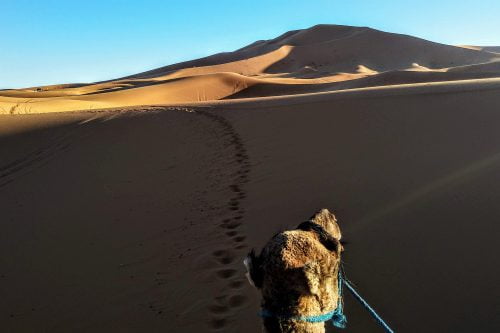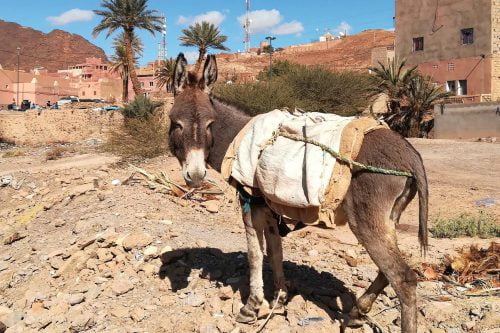Description
We like the idea of proposing a tour of the 9 sites in Morocco that from 1981 to 2012 have been declared World Heritage Sites by UNESCO (The United Nations Educational, Scientific and Cultural Organization). Among the items of the UNESCO list, we find the ancient medinas of Fez, Marrakech, Essaouira and Tétouan, the historic towns of Meknes and Magazan (now El Jadida), the entire city of Rabat, Volubilis archeological site and the Ksar of Ait Ben Haddou.
We’ll decide together the exact itinerary and the days to spend in each city depending on your interests, on how much time you have, and on the arrival and departure airport (it does not need to be the same).
For the record, the UNESCO has declared Intangible Cultural Heritage six Moroccan cultural expressions: from Jemaa el Fna square in Marrakech, daily home of charmers, storytellers and musicians, cultural space and meeting point for locals and visitors, to the production of Argan (precious oil used for cooking, cosmetics, some medical therapies, extracted with traditional methods passed from one generation to the next), from the Sefrou Cherry Festival (held every year in June in this small town a few kilometers from Fez) to Tan-Tan Moussem (a religious and cultural festivity where more than forty nomad tribes gather in this town of Western Sahara), from Taskiwin (a martial dance specific to the western High Atlas mountain range) to the Gnawa music.
FEZ
“Our Medina streets were narrow, dark, and serpentine-filled with so many twists and turns that cars could not enter, and foreigners could not find their way out if they ever dared to come in.”
With these words, the Moroccan writer describes Fez’s Medina in her book “Dreams of Trespass,” a true labyrinth of narrow streets that haven’t lost their original charm with their wooden balconies, old buildings, mosques, madrasas (religious schools) and the famous tanneries. The Medina of Fez – the biggest one in the world with 9000 narrow streets – was the first site of Morocco to be recognized as a World Heritage Site by UNESCO in 1981.
MARRAKECH
“Before Marrakech, everything was black. This city taught me colour, and I embraced its light, its insolent mixes, and ardent inventions.”
With these words, Yves Saint Laurent perfectly described Marrakech, one of the four imperial cities of Morocco. It’s impossible not to be fascinated by the blue of its sky, the pink of its city wall, the thousands of colors of its souks brimming with beautiful and unique handicrafts. Visiting its palaces, enjoying its museums, letting ourselves be overwhelmed by the daily evolution of Jemaa El Fna square (inserted in the UNESCO Lists of Intangible Cultural Heritage), getting lost in the medina’s narrow streets (UNESCO World Heritage Site in 1985)…it’s all something to do at least once in a lifetime.
The medina of Marrakech, enclosed in its unmistakable wall entirely built with the Rammed earth technique (an ancient technique that consists in “pressing” and mixing the earth with water, hay and natural fibers), spaced out by several Bab (gates), it’s a triumph of colors, sounds (or better-said noises), smells and flavors.
MEKNES
Considered the Versailles of Morocco, Meknes was founded at the end of the 1600s by Moulay Ismail, the Arab “Sun King” whom the legend says had a harem of 500 concubines! Meknes may be the smallest of the Imperial cities, but it boasts monuments of unique grandeur and the longest and tallest city wall of Morocco with majestic, richly decorated gates of access. Of particular note are the Royal Stables and the Mausoleum of Moulay Ismail with elegant Moorish-style decorations, one of the very few religious monuments that can be visited by non-Muslims.
The old medina, UNESCO World Heritage Site since 1996, is surely smaller and less chaotic than the ones of the other imperial cities, but this doesn’t mean they are less rich in charm. Of particular interest is the Bou Inania Madrasa, one of the most beautiful Koranic schools in Morocco.
TÉTOUAN
At the foot of the Rif, a few kilometers from the Mediterranean Sea, we can find Tétouan, a town of a clear Andalusian footprint, heritage of the mass arrivals of Muslims and Jews who fled Spain after the falling of Granada in the 15th century.
Protected by bastions with seven beautiful carved gates, its medina that stretches to the upper part of the town strikes for the blinding white of its houses, interrupted every once in a while, by the flashy colors of doors and windows. A true maze of narrow and winding streets, souk, artisan shops and ancient palaces, that still have the charm of the past and that “earned” the city the inclusion in the UNESCO World Heritage list in 1995.
VOLUBILIS
At the foot of the Atlas Mountain Range in a valley full of olive and almond trees, close to Meknes, we can find Volubilis, one of the most famous archeological sites of Roman Africa, a UNESCO World Heritage Site since 1997.
Well-preserved is the triumphal arch dedicated to Caracalla, the basilica remnants with two opposing apses, the aqueduct, the Roman bath and a series of beautiful polychrome mosaics. It is an extraordinary example of the Roman presence beyond the Mediterranean sea’s shores.
RABAT
In 2012 the whole city of Rabat was included in the UNESCO World Heritage list for its mix of ancient and modern influences that make the capital a “microcosm of the whole country.”
Now the capital of Morocco – it had been already an imperial capital in the 12th century under the Almohad Caliphate – Rabat will welcome you with a mix of history and modernity, on one side the beautiful Kasbah of the Udayas that overlooks the sea and its splendid medina surrounded by 1500s wall, on the other side the modern city’s boulevards, state offices buildings, embassies and universities.
Rabat is a city of great architectural and artistic importance, with its minarets, the massive city wall that surrounds it spaced out by monumental gates, the Hassan Mosque, left unfinished and considered one of the greatest sanctuaries of the Muslim world and the Mausoleum of Mohammed V, which is not only a tomb but also a symbol of the craft of Moroccan craftsmen.
ESSAOUIRA
Along the Atlantic coast, roughly 190 km from Marrakech, Essaouira (called Mogador in the past, i.e. small fortress) has always been an important port that connects the rest of the African continent with Europe. With a delicious blue and white medina (UNESCO World Heritage Site since 2001), the port with its unmistakable blue boats and the fish market, the town is basically a must-see when traveling to Morocco.
Its story was a sequence of splendor and richness, but also of desolation and decline. It was the favorite destination of the 70s hippie generation, for a few years now, it’s been hosted the Gnawa World Music Festival originally dedicated to music born out of the slaves from Sub-Saharan Africa – in particular from Sudan, Mali and Guinea – and now widened to contemporary funk music, blues, jazz and soul, and for 3 days it transforms Essaouira in a beating heart of music, art and culture.
EL JADIDA
El Jadida, the old city of Mazagan, was built by the Portuguese at the beginning of the 16th century as a fortified city overlooking the Atlantic Ocean. After the Portuguese left (in the second half of the 1700s) the locals added to El Jadida their personal touch, however leaving the town with its original architectural structure. 4 of the 5 original bastions are still in perfect condition: the Angel bastion is remarkable, from its top you can enjoy a splendid view of the city and not to be forgotten is also the San Sebastian bastion, which still holds an Inquisition chapel. Well preserved are also the Church of the Assumption (one of the first buildings built by the Portuguese, now converted into a luxury hotel), the ancient synagogue overlooking the ocean and the suggestive Portuguese cistern with a beautiful circular and arched colonnade and the well to collect water in its center.
Opposite the Church of the Assumption, there is the mosque with its pentagonal minaret, a shape very much unique in Morocco and perhaps in the whole world.
In 2004 UNESCO listed the historic city of El Jadida as one of the World Heritage Sites, thanks to its hybrid European and Islamic nature.
AIT BEN HADDOU
While traveling along the valley of the Ounila river (dry for most of the year) following the caravan route between the Sahara and Marrakech, you will stumble upon a massive and evocative construction perched on a hill, with tawny walls and crenellated towers. At a first glance, this might look like a castle made out of sand.
In reality it is the ksar (fortified city) of Ait Ben Haddou partly dating back to the twelfth century, and partly to 1740. Its entire structure is built using the pisé technique (an ancient technique that consists in mixing and pressing soil with water, straw and natural fibers). The imposing walls, decorated with geometric patterns, are typical of the Berber culture.
The ksar holds two kasbahs, still inhabited by some members of the Glaoui family (heirs of the last pasha of Marrakech) and a set of other buildings mostly occupied by souvenir shops.
When crossing the labyrinth of alleys and covered passages to the top of the hill, you will be able to see the beautiful barn and enjoy a spectacular view of the whole valley.
UNESCO included the site, used several times as a film set, in the list of World Heritage Sites in 1984.
The Tour Includes
The Tour Does Not Include
Write and tell us what you have in mind, we will suggest the perfect itinerary for you based on the dates of your trip!

